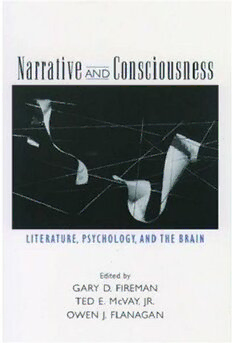
Narrative and Consciousness: Literature, Psychology and the Brain PDF
265 Pages·2003·1.351 MB·English
Most books are stored in the elastic cloud where traffic is expensive. For this reason, we have a limit on daily download.
Preview Narrative and Consciousness: Literature, Psychology and the Brain
Description:
We define our conscious experience by constructing narratives about ourselves and the people with whom we interact. Narrative pervades our lives--conscious experience is not merely linked to the number and variety of personal stories we construct with each other within a cultural frame, but is subsumed by them. The claim, however, that narrative constructions are essential to conscious experience is not useful or informative unless we can also begin to provide a distinct, organized, and empirically consistent explanation for narrative in relation to consciousness. Understanding the role of narrative in determining individual and collective consciousness has been elusive from within traditional academic frameworks. This volume argues that addressing so broad and complex a problem requires an examination from outside our insular disciplinary framework. Such an open examination would be informed by the inquiries and approaches of multiple disciplines. Recognition of the different approaches to examining personal stories will allow for the coordination of how narrative seems (its phenomenology), with what mental labor it does (its psychology), and how it is realized (its neurobiology). Only by overcoming the boundaries erected by multiple theoretical and discursive traditions can we begin to comprehend the nature and function of narrative in consciousness. Narrative and Consciousness brings together essays by exceptional scholars and scientists in the disciplines of literary theory, psychology, and neuroscience to examine how stories are constructed, how stories structure lived experience, and how stories are rooted in material reality (the human body). The specific topics addressed include narrative in the development of conscious awareness; autobiographical narrative, fiction and the construction of self; trauma and narrative disruptions; narrative, memory and identity; and the physiological and neural substrate of narrative. It is the editors' hope that the multidisciplinary nature of this collection will challenge the reader to move beyond disciplinary confines and toward a coherent interdisciplinary dialogue.
See more
The list of books you might like
Most books are stored in the elastic cloud where traffic is expensive. For this reason, we have a limit on daily download.
